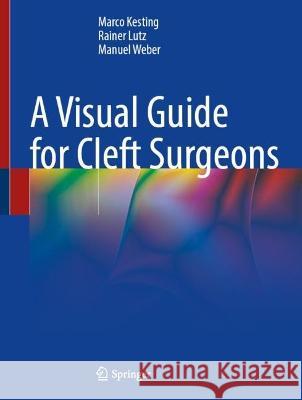A Visual Guide for Cleft Surgeons » książka
topmenu
A Visual Guide for Cleft Surgeons
ISBN-13: 9783031335204 / Angielski / Twarda / 2023
A Visual Guide for Cleft Surgeons
ISBN-13: 9783031335204 / Angielski / Twarda / 2023
cena 644,07
(netto: 613,40 VAT: 5%)
Najniższa cena z 30 dni: 616,85
(netto: 613,40 VAT: 5%)
Najniższa cena z 30 dni: 616,85
Termin realizacji zamówienia:
ok. 22 dni roboczych
Dostawa w 2026 r.
ok. 22 dni roboczych
Dostawa w 2026 r.
Darmowa dostawa!
Books on cleft surgery are usually very specific and written for experts in the field. A basic surgical learning manual on the techniques of cleft surgery has been missing on the market so far. Surgical atlases do not contain all surgical steps and make it difficult for beginners in cleft surgery to understand the surgical concept in the operating room. The technique of cleft surgery is often passed on directly from teacher to student without using a didactically elaborated teaching concept.This book closes precisely this gap. Thus, cleft surgery is presented systematically - with first steps on an innovative training model, didactically meaningful and with numerous detailed illustrations. Each chapter begins with information on the historical background. As a start, there is a brief description on how the established surgical techniques became standard and which considerations led to these concepts. Then anatomical basics, as well as preoperative considerations are presented. Elaborate schematic drawings and illustrations are used for this purpose. Each surgical technique is then explained and shown step by step with numerous pictures. A simple training model offers the opportunity to simulate and practice lip closure techniques step by step. Finally, there are expert tips and recommendations for further reading. The book presents an international standard for all surgeons learning cleft surgery. However, it can also be helpful for experts in the field, e. g. for looking up concepts in rarer cleft types such as lateral facial clefts.











